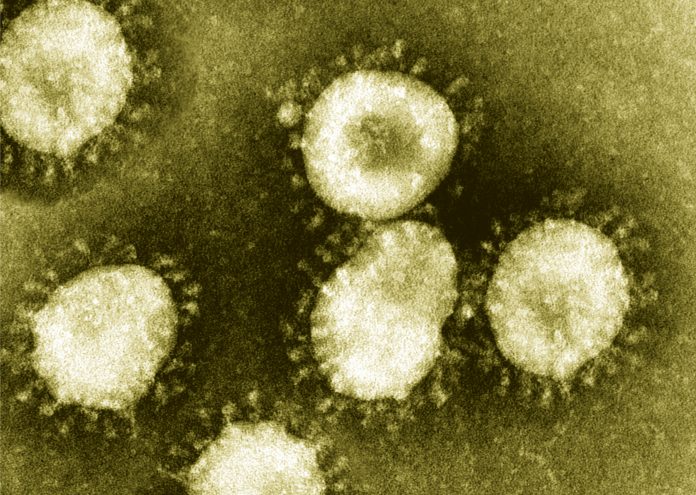Captain Casey Barton Behravesh of the U.S. Public Health Service, and Director of the CDC One Health Office highlights the CDC’s efforts to nationally and internationally prevent zoonotic diseases
60% of existing human infectious diseases are zoonotic, and at least 70% of emerging infectious diseases of humans have an animal origin. Zoonotic diseases, or diseases that can spread between people and animals, are a growing concern as human interactions with animals and the environment change and diseases with global consequences, such as Ebola and COVID-19, emerge.
The Centers for Disease Control and Prevention (CDC) works 24/7 to protect people from zoonotic diseases in the United States and around the world.
Zoonotic pathogens can spread between people and animals in several ways:
- Direct contact: Contact with the saliva, blood, urine, mucous, faeces, or other body fluids of an infected animal. Examples include petting or touching animals, and bites or scratches.
- Indirect contact: Contact with areas where animals live and roam, or objects or surfaces that have been contaminated with germs. Examples include aquarium tank water, pet habitats, chicken coops, barns, plants, and soil, as well as pet food and water dishes.
- Vector-borne: Being bitten by a tick, or an insect such as a mosquito or a flea.
- Foodborne: Eating or drinking something unsafe, such as unpasteurised (raw) milk, undercooked meat or eggs, or raw fruits and vegetables that are contaminated with faeces from an infected animal. Contaminated food can cause illness in people and animals, including pets.
- Waterborne: Drinking or coming into contact with water that has been contaminated with faeces from an infected animal.
Anyone can get sick from a zoonotic disease, including healthy people. However, some people are more at risk than others, including children younger than five, adults older than 65, people with weakened immune systems, and pregnant women. They are more likely than others to get seriously sick and even die, from infection with certain zoonotic diseases.
The National Center for Emerging and Zoonotic Infectious Diseases (NCEZID)
The mission of NCEZID at the Centers for Disease Control and Prevention is to reduce illness and death associated with emerging and zoonotic infectious diseases and to protect against the unintentional or intentional spread of infectious diseases.
One Health
In 2009, CDC created the One Health Office which serves as the leading federal office for U.S. government One Health activities, facilitating coordination, communication and collaboration between all relevant One Health stakeholders in the U.S. and abroad.
One Health is a collaborative, multisectoral, and transdisciplinary approach — working at the local, regional, national, and global levels — with the goal of achieving optimal health outcomes recognising the interconnection between people, animals, plants, and their shared environment.
One Health work is not new, but it has become more important in recent years and is gaining recognition globally as an effective way to control and prevent zoonotic diseases.
Many factors, such as human population growth and expansion, changes in climate and land use, and increased travel and trade, have changed interactions between people, animals, plants, and our environment. These changes have led to the spread of existing or known (e.g., endemic diseases) and new or emerging zoonotic diseases of public health importance.
Zoonotic pathogens, such as E. coli, Salmonella, anthrax, rabies, and Lyme disease, can cause many different types of illnesses in people and animals, ranging from mild to serious illness and even death.
No one sector can address issues at the human-animal-environment interface alone. An effective One Health approach brings together people from different backgrounds and sectors to work together to address public health issues at the human-animal-environment interface and achieve the best health results.
The CDC’s One Health Office works to promote the concept of One Health and increase awareness of CDC’s role in One Health in the United States and around the world. The office encourages collaborative efforts of many experts (such as epidemiologists, laboratorians, physicians, veterinarians, and ecologists) working across animal, human, and environmental health to improve the health of both people and animals, both within CDC and with external partners and for domestic and global One Health activities.
Diseases can spread around the world very quickly, so it’s important for CDC’s One Health Office to work closely with other countries to build strong partnerships with human, animal and environmental health organisations. This protects Americans from illnesses that cross borders and affect travellers. The office works closely with human, animal and environmental health partners in the United States, in other countries, and with international organisations to:
- Build strong partnerships.
- Develop tools and trainings to advance One Health.
- • Leverage CDC’s expertise to assist partners in strengthening One Health efforts.
The One Health Office also provides scientific expertise to domestic and global partners on One Health issues, serving as the head of the World Organisation for Animal Health (OIE) Collaborating Center for Emerging and Re-emerging Zoonotic Diseases and positioning staff as agency liaisons to the Food and Agriculture Organization of the United Nations (FAO) and OIE. Additionally, the office participates in response efforts for outbreaks of zoonotic diseases, providing expertise on the One Health aspects of zoonotic diseases with the potential for global consequences like Ebola and COVID-19.








